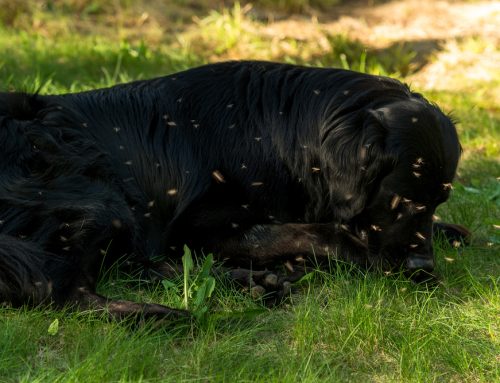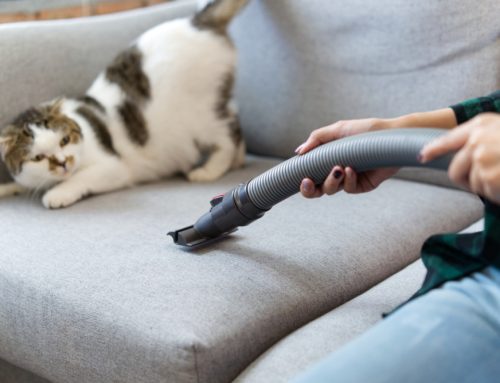 Bam, pop-pop-pop, kaboom! From Fourth of July festivities to the ground-shaking thunder claps of a storm, these are the sounds of summer. Noise aversion in pets is a common condition, and these seasonal sounds may unfortunately create a lot of stress and result in adverse effects on health and wellbeing.
Bam, pop-pop-pop, kaboom! From Fourth of July festivities to the ground-shaking thunder claps of a storm, these are the sounds of summer. Noise aversion in pets is a common condition, and these seasonal sounds may unfortunately create a lot of stress and result in adverse effects on health and wellbeing.
Few, if any, animals appreciate loud noises. This is in part due to their sensitivity to noise and ability to hear high frequencies. However, for some pets, simple aversion can turn into full blown phobias.
Is It Simple Aversion or a Phobia?
Most animals will react to a sudden loud noise by wincing or ducking a bit. In general, sudden noises can be frightening to a pet and it is a natural response to want to seek the safety of a closet or to ‘get away’ from the source of the noise.
The problem with extreme anxiety, however, is that it can pose health and behavioral challenges when the level of stress progresses. There are a number of reasons why a pet might develop a phobia, from genetics to experiencing trauma or abuse.
Dog who have not been socialized are also at greater risk for anxiety and phobias. And, left untreated, a phobia can damage nerve cells and change actual brain function.
Some of the warning signs that your pet may have a noise phobia or more serious stress response include:
- Intense avoidance
- Chewing or breaking through restraints, carriers, etc.
- Destructive behaviors such as digging and chewing
- Excessive panting and/or drooling
- Uncontrolled urination/defecation
- Trembling
- Escape
- Aggression
- Vocalization
The degree to which these responses interfere with the health and livelihood of your pet depends upon how far the fear or phobia has progressed. Therefore we recommend a behavioral consultation should you pet experience unusually high level of fear or stress.
Ways to Address Noise Aversion in Pets
If your pet typically experiences mild to moderate stress response or fear, there are ways you can help him or her better cope. Planning in advance of any holiday, for example, might prompt you to find a quiet, secure spot inside the home for your fluffy pal during the holiday festivities.
You can also prepare in advance for thunderstorm season by making some changes at home that can help diminish outside noise, such as playing a soothing cd or turning the television on at medium volume. White noise machines can also be useful.
Many pet guardians have found a product such as the Thundershirt to be effective in addressing anxiety in cats and dogs. The Thundershirt works by applying a steady, light pressure to the torso, which calms the nervous system and relaxes your pet.
Planning for situations that might be stressful for your pet can also include the use of pheromone sprays, distracting toys, such as a Kong filled with peanut butter, or pet ear muffs to help lessen the severity of outside noises.
For continued or progressively worsening fear response, treatment options may also include medication and desensitization techniques.
Don’t let the kabooms! of the season create unnecessary panic in your pet. Use some of these calming tactics to help your fur friend cope.
And, if you haven’t gotten your pet microchipped, we strongly recommend taking this important step in preventing a lost pet situation.






